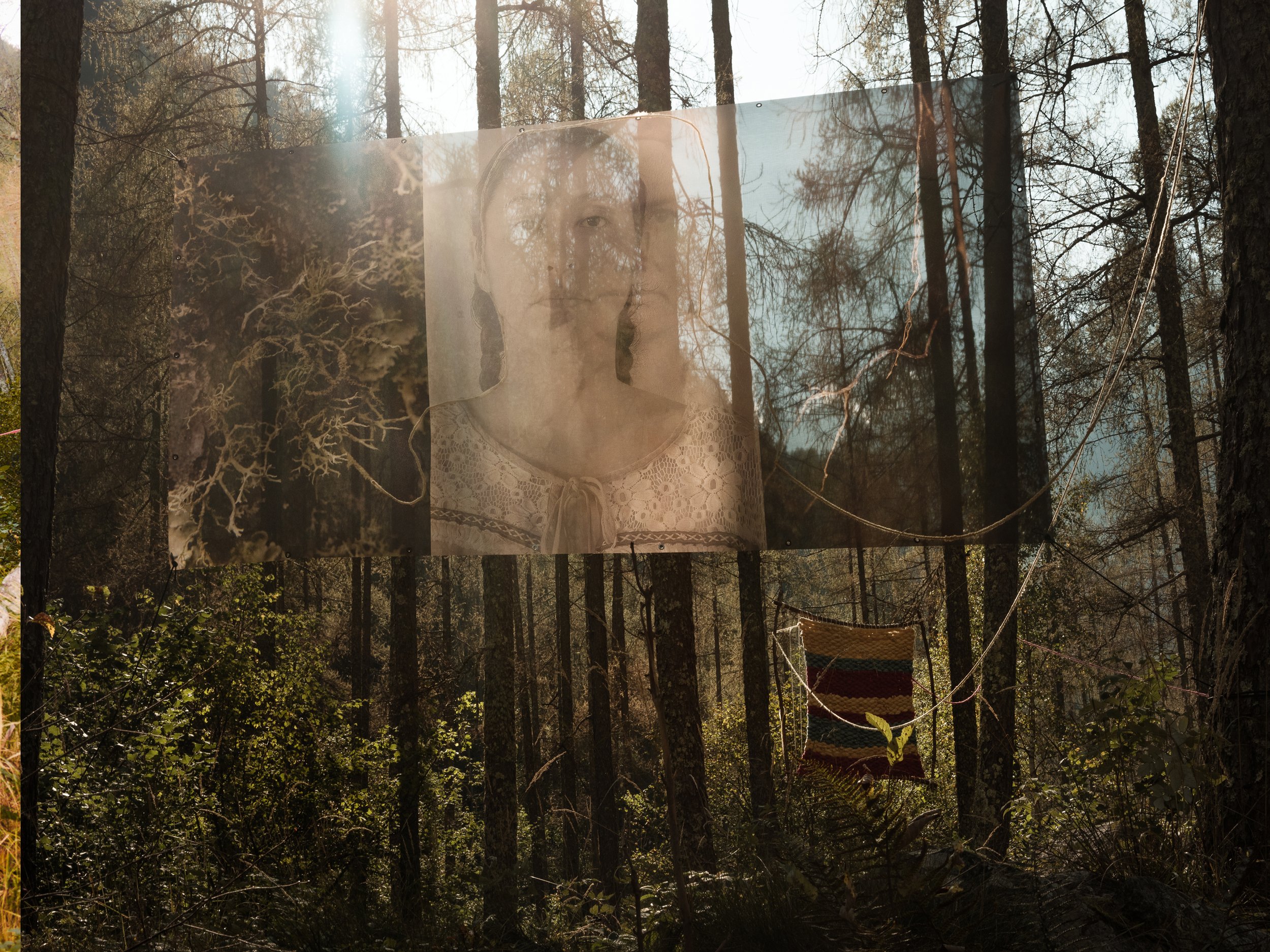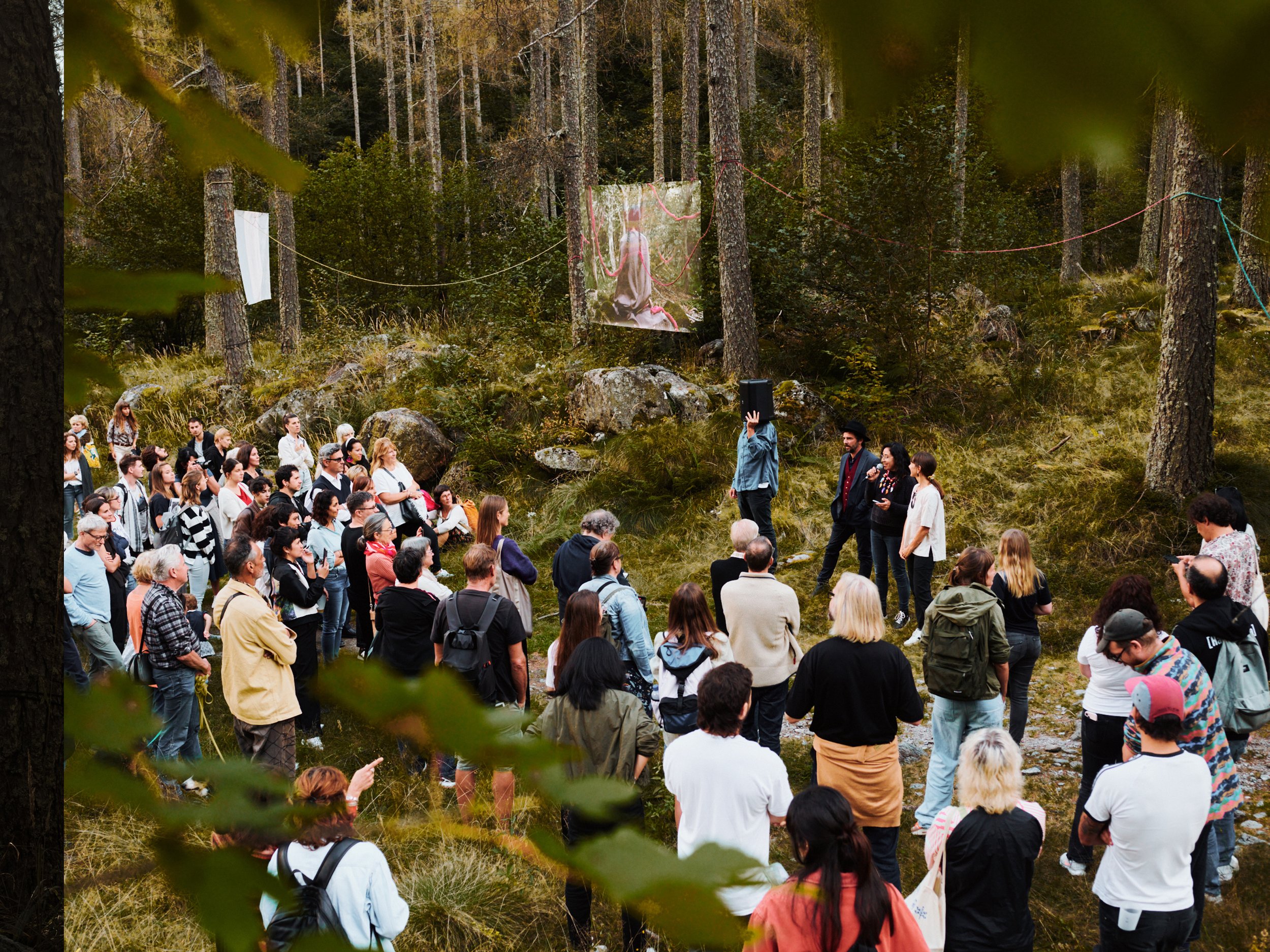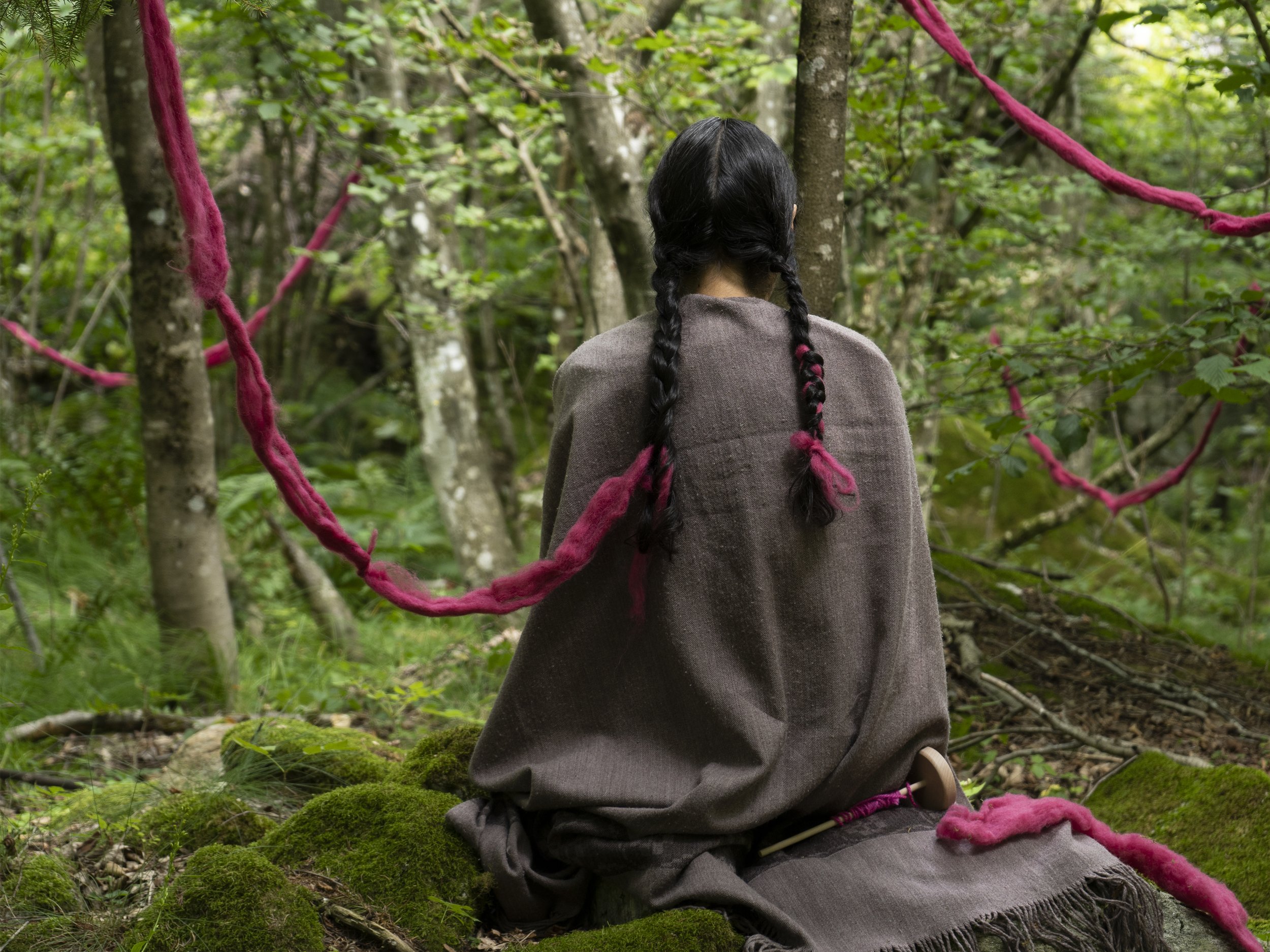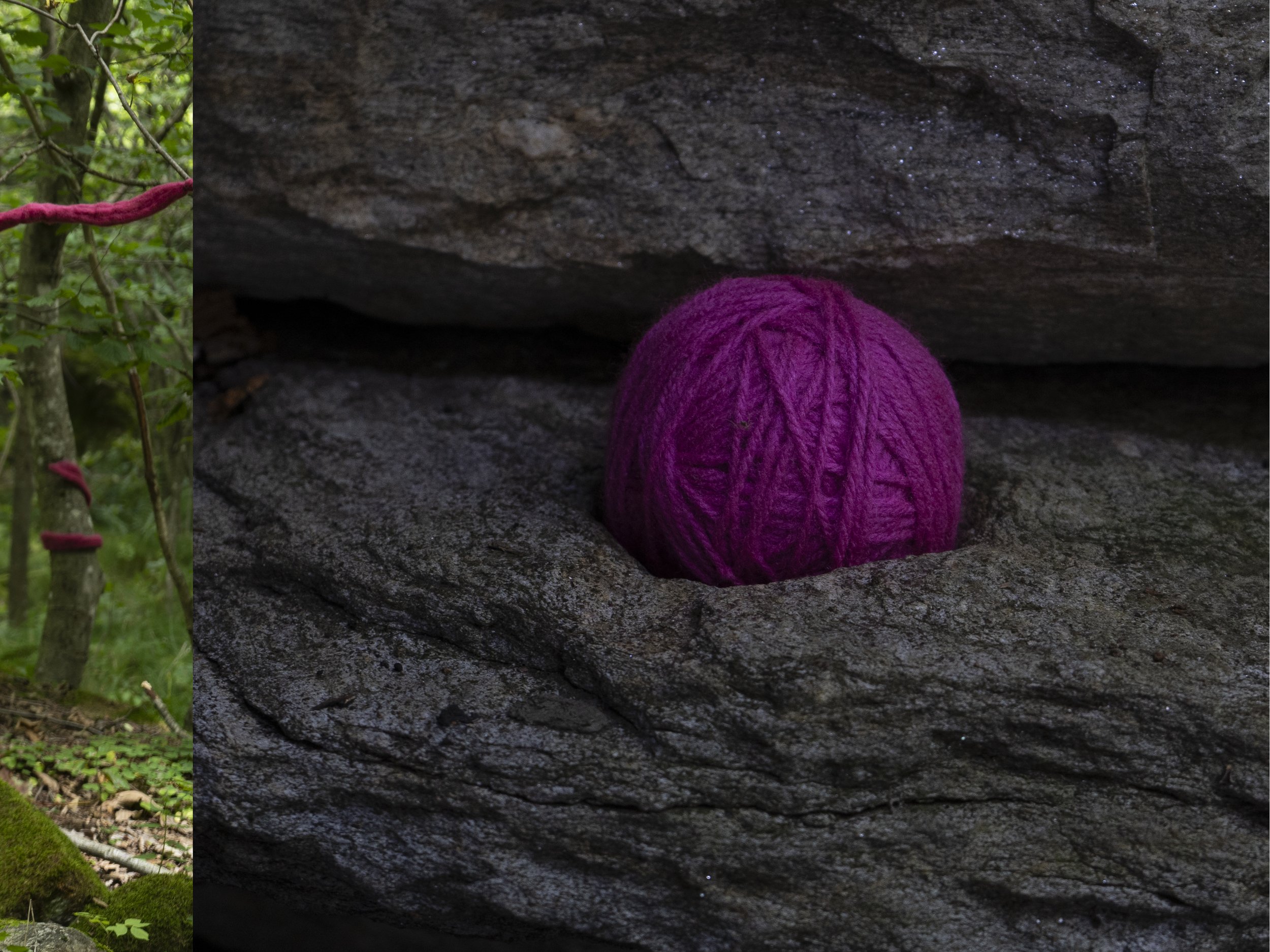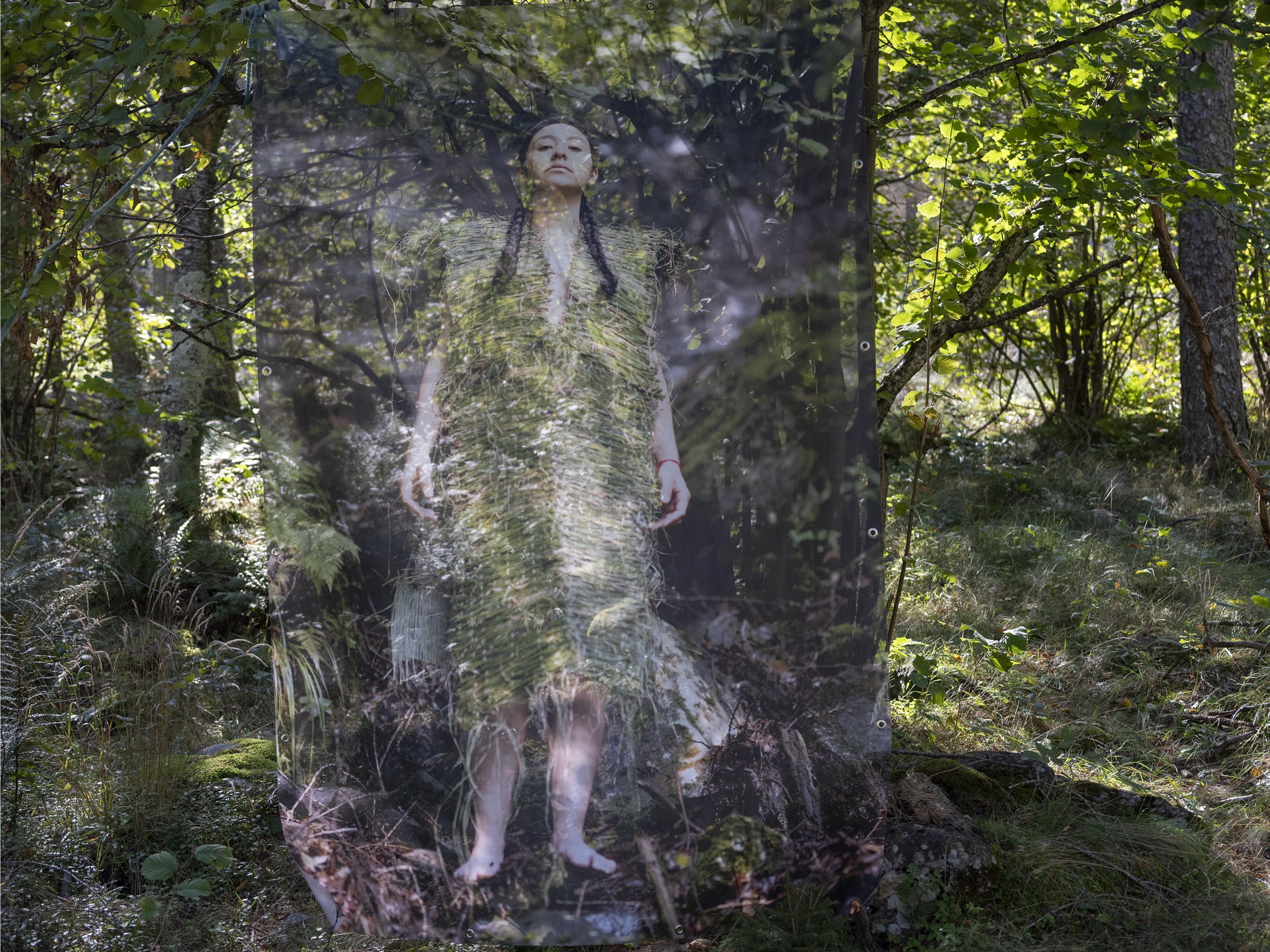Gabriela Olivera Hidalgo (Bolivia)
Sawuri
Exhibition at Redorta Valley, Sonogno 2023
in collaboration with Pro Helvetia South America
“Sawuri” is a Aymara word that means weaver.
How can an image connect us with our history? I began this project thinking about rhizomes, as if each of us were part of the same trunk, the same tree, and like rhizomes we were spreading out, creating connections, weavings that allow us to understand the world.
A spinning wheel at home, a space to produce wool, a map of Sonogno in the museum traced by a yellow line. A line similar to a thread, a strand that is part of a weave, of a more complex fabric, which reaffirmed my desire to approach weaving. Textile is identi- ty, it is language, it is the rhizome of a culture. How is memory woven? What are those weaves of a fabric that come together to build my identity? My grandmother always invites me to look back, to understand my present, to look at myself and find myself dee- ply, as a reflection, as a thread that is part of my weaving. Her work as a weaver was manifested in this distant place. Then, the rocks were transformed into balls of wool and the natural weaving of the forest became present.
Weaving invites me to conceive the world in a deeper way, becau- se we are an immense fabric. It makes me think about the weaves that compose us: the front and back of a fabric, the knots, the joints, the sutures. They are an analogy of our construction as human beings. Through weaving I can understand more of my Andean world: “To cross the threads is to fabricate the concepts of which this world is composed”.
“Sawuri” è una parola aymara che significa tessitore.
Come può un’immagine connetterci con la nostra storia? Ho iniziato questo progetto riflettendo sui rizomi, come se ognuno di noi fosse parte dello stesso tronco, dello stesso albero, e come i rizomi ci espandessimo, creando connessioni, tessiture che ci permettono di comprendere il mondo.
Un telaio a casa, uno spazio per produrre la lana, una mappa di Sonogno nel museo tracciata da una linea gialla. Una traccia simile a un filo, un filo che fa parte di una tessitura, di un tessuto più complesso, e che ha rafforzato il mio desiderio di avvicinarmi alla tessitura. Il tessile è identità, è linguaggio, è il rizoma di una cultura. Come si tesse la memoria? Quali sono le trame di un tessuto che insieme formano la mia identità? Mia nonna mi invita sempre a riflettere sul passato, a comprendere il mio presente, a guardarmi e a trovarmi profondamente, come un riflesso, come un filo che fa parte della mia tessitura. Il suo lavoro da tessitrice si è manifestato in questo luogo lontano. Le rocce si sono state tras- formate in gomitoli di lana e la tessitura naturale della foresta si è mostrata.
La tessitura mi invita a concepire il mondo in modo più profondo, perché siamo un immenso tessuto. Mi fa pensare alle trame che ci compongono: al dritto e al rovescio di un tessuto, ai nodi, alle giunture, alle suture. Un’analogia della nostra costruzione come esseri umani. Attraverso la tessitura posso capire di più del mio mondo andino: attraversare i fili è fabbricare i concetti di cui è composto questo mondo.
Gabriela Olivera Hidalgo
(ENG) Gabriela Olivera Hidalgo is an artist who lives and works in Cochabamba , Bolivia. Her work explores themes of identity, women and the body. Graduated in Fine Arts from the Universidad Mayor de San Andrés in La Paz-Bolivia, and is a filmmaker with a specia- lization in documentary filmmaking from the Instituto de Arte Cinematográfico de Avellaneda in Buenos Aires, Argentina. Scholarship for the formation of photographers and visual artists of Proyecto Imaginario Latinoamerica. Member of the first wo- men’s photographic collective in Bolivia, War Mi Photo, with whom she received the ECO/22 international scholarship from the Vist Projects foundation.
(ITA) Gabriela Olivera Hidalgo è un’artista che vive e lavora a Cochabamba, in Bolivia. Il suo lavoro esplora temi legati all’identità, alle donne e al corpo. Laureata in Belle Arti presso l’Universidad Mayor de San Andrés di La Paz-Bolivia, è anche una filmmaker con specializzazione in documentari presso l’Instituto de Arte Cinematográfico di Avellaneda di Buenos Aires, in Argentina. È inoltre borsista per la formazione di fotografi e artisti visivi di Proyecto Imaginario Latinoamerica. Membro del primo collettivo fotografico femminile in Bolivia, War Mi Photo, con cui ha ricevuto la borsa di studio internazionale ECO/22 dalla fondazione Vist Projects.


